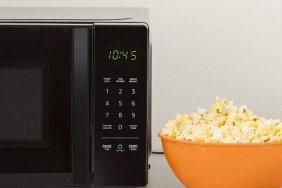Ever hear the one about the family that loaded their home up with sleek design-forward tech and accessories only to discover in the middle of the night that their entire home had been hacked? No, it’s not a page out of a science fiction thriller. It’s a very real nightmare for a number of families who’ve invested in smart home installations provided by cloud-based internet gatekeeper Dyn, all-in-one place automated systems from Insteon or a host of other such connected home companies, apps and web portals.
The idea that one moment your smart light bulb from Philips Hue or thermostat from Nest is working seamlessly and in the next turns against you is certainly troubling. Back in October of 2016, Dyn was the victim of an all-out assault from hackers that bombarded the hub (i.e. Netflix, Facebook, a plethora of smart home apps) with false bandwidth to unsecured connected home devices. The result: a tsunami of absolute chaos.

Even something as innocent as Philips Hue lighting can be hacked if not properly secured. Photo courtesy of Philips.
The problem was not the sleek devices themselves. Everyone loves GE’s microkitchen or Philips’ brand of personalized lighting. The problem is that many of the automated systems that remotely govern your devices run off of easily hacked manufacturer-provided passwords. Heck, a good deal of these homes are searchable on Google or Shodan.
Also: Smart Home Tech That Increases Your Energy Efficiency
Look no further than Forbes correspondent Kashmir Hill’s first experiment with the idea of hacking a home way back in 2013. In an in-depth account she gave the basic instruction book on how to hack a smart home in a few easy steps. Fast forward to the present and nothing has changed in the way we secure our homes from hacks.

The Nest thermostat has proven to be an easy target for hackers. Photo courtesy of Nest.
So how do you secure your home from the threat of a hack? No, don’t box up the WiFi lamps, automated thermostats, home security systems or temperature regulated dining tables. Instead, first do the most obvious: create a password so thick in complexity it would be easier breaking into Fort Knox. And create more than one. Don’t use the same “fool-proof” password for all of your connected devices. If you do, you might as well hand over the house keys to your friendly neighborhood hacker.
Second, reconsider those Skype sessions and connected cameras to your smart TVs and other devices throughout the home. Hackers most likely can watch you watching TV, as is the case with Samsung’s Smart TV’s security flawed television.

Smart homes can be hacked. Photo courtesy of Huffington Post.
But lastly, consider taking some things offline. Your front door controlled by your phone is not a wise investment. Neither is synchronizing all your devices to one central location such as your phone. Hackers can use a search engine like Shodan to easily look up “default password” and stumble upon a goldmine of such home addresses leading to your router, network extender, your smart wallet, refrigerator, thermostat…you get the idea. Just because your smart home is all kinds of hip doesn’t mean your sense of discretion and prudence should take a hit.







